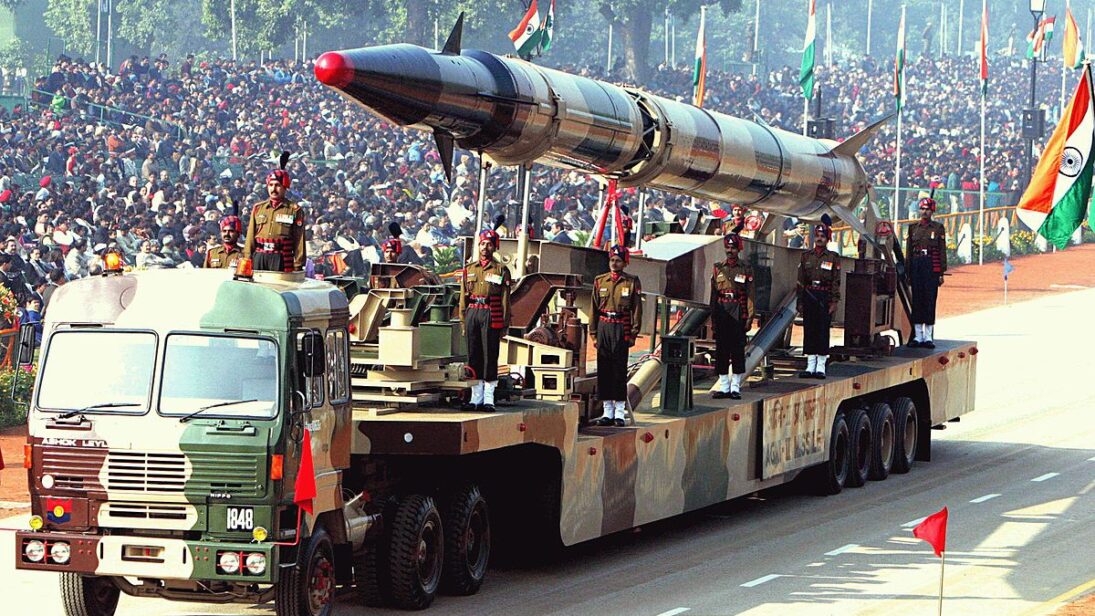
by Khalid Iqbal 15 December 2023
The arms race in South Asia is a complex and longstanding phenomenon, shaped by historical conflicts, territorial disputes, and unresolved tensions among regional players. Central to this dynamic is India’s significant military buildup, driven by a combination of internal security concerns and external threats. This military modernization, marked by technological advancements and substantial acquisitions, reflects India’s strategic commitment to assert itself as a major player in the region. The nuclearization of South Asia, with both India and Pakistan possessing nuclear weapons, adds a layer of intricacy to the arms race, introducing concerns about the delicate balance between deterrence and the risk of catastrophic escalation in the event of a conflict. Regional responses, geopolitical implications, economic costs, and diplomatic initiatives further contribute to the multifaceted nature of the arms race, highlighting its broad impact on security dynamics in South Asia.
The arms race in South Asia is a complex phenomenon shaped by historical conflicts, nuclearization, regional responses, and global implications. Understanding the intricacies of India’s military buildup is crucial for comprehending the security landscape in this critical part of the world. The roots of the arms race in South Asia can be traced to historical conflicts and unresolved territorial disputes. Lingering hostilities, particularly between India and Pakistan, perpetuate a cycle of military buildups, creating an environment where nations feel compelled to enhance their military capabilities for strategic reasons. India, a major regional player, has undergone significant military modernization. Driven by internal security concerns and external threats, India’s defense strategies reflect a commitment to addressing 21st-century challenges. Technological advancements and substantial military acquisitions showcase India’s aspiration to be a regional hegemon.
The acquisition of nuclear weapons by India and Pakistan adds complexity to the arms race. While aimed at ensuring national security, the nuclear deterrent raises concerns about catastrophic consequences in case of a conflict. Striking a delicate balance between deterrence and the risk of escalation becomes crucial for regional stability. Neighboring countries, particularly Pakistan, respond to India’s military buildup by enhancing their defense capabilities and providing for a balance of power. Understanding diverse regional responses is essential for assessing the overall impact on security dynamics.
The arms race in South Asia reverberates globally, influencing alliances, diplomatic relations, and overall power dynamics. India’s strategic choices have broader geopolitical implications, adding layers of complexity to the security calculus in the region. While addressing security concerns, the arms race comes at a significant economic cost. The substantial financial resources allocated to military expenditures could be directed towards social and economic development. Balancing the need for security with economic sustainability poses a challenge for nations in the region. Amidst the arms race, diplomatic efforts and peace initiatives play a crucial role in mitigating tensions. Regional and global stakeholders engage in dialogue to foster conflict resolution and build sustainable peace. Initiatives aimed at confidence-building measures and diplomatic dialogue are essential for stabilizing the security environment.
The arms race poses multifaceted challenges, including destabilization, hindrance to economic progress, and potential humanitarian crises. Addressing these challenges requires a comprehensive approach that goes beyond military considerations. The international community closely monitors the arms race in South Asia, recognizing its global repercussions. Concerns about potential conflicts and the impact on global security underscore the need for concerted efforts to prevent destabilization in the region. Predicting the future trajectory involves assessing the evolving geopolitical landscape, diplomatic initiatives, and the commitment of nations to regional stability. Scenarios ranging from increased tensions to diplomatic breakthroughs shape potential outcomes, emphasizing the need for strategic foresight.
In conclusion, the arms race in South Asia, with a focus on India’s military buildup, is a complex and multifaceted phenomenon. While security concerns drive nations to enhance their military capabilities, the delicate balance between deterrence and the risk of conflict underscores the need for diplomatic resolutions, arms control measures, and regional cooperation. Only through a comprehensive and collaborative approach can South Asia navigate the challenges posed by the arms race and move towards a more stable and secure future.
